Fruit is a versatile food that we can do many things with. We can simply enjoy a piece of fruit as a snack, use it as an ingredient when producing interesting culinary dishes, or even use it to make high-quality cosmetic products. Here we look at fruits that start with K
However, with there being so many different types of fruit available all around the world it is near impossible to put them all in one list, never mind understanding exactly what it is you may be buying.
If you’re a big fruit lover wanting to improve your knowledge or have a unique recipe with an ingredient you don’t recognize, this is the best place for you.
To help you out, we have put together an extensive list of some of the most common, unique, exotic, and exciting fruits from around the world that start with the letter K. If you’re eager to learn more be sure to keep reading.
1. Kiwi Fruit
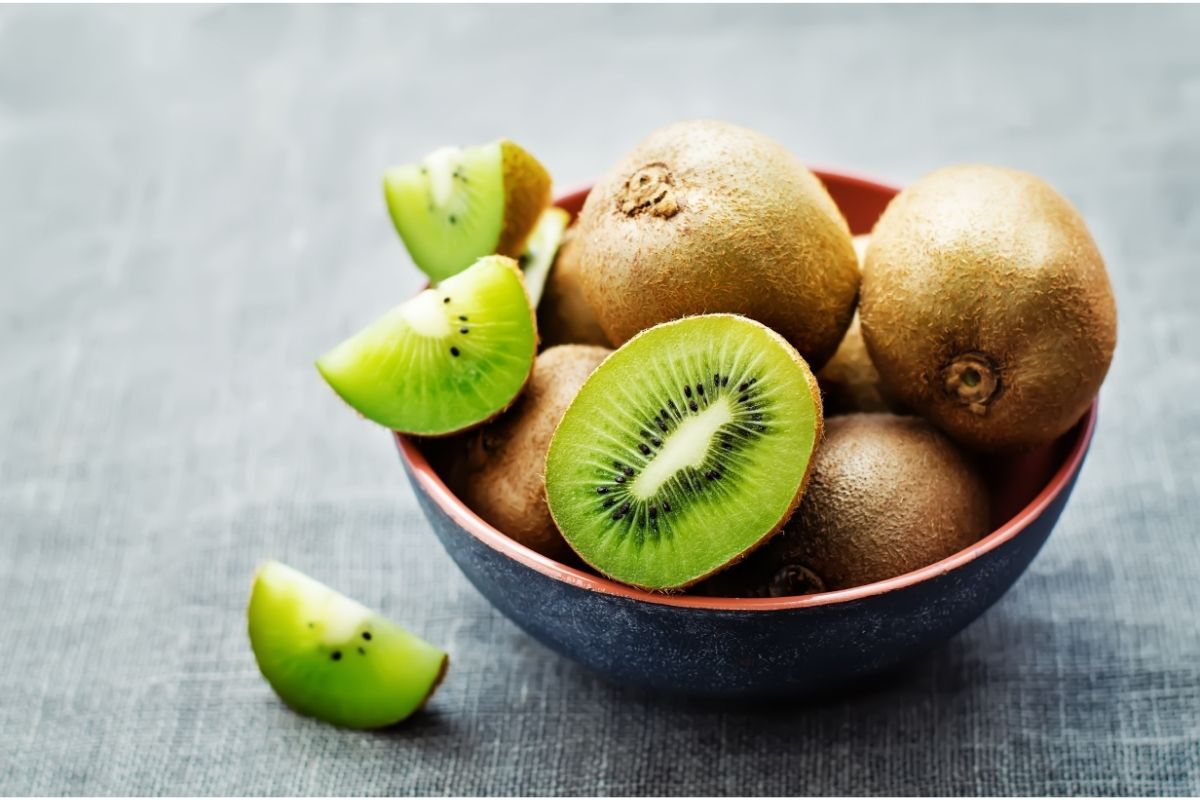
The most recognizable and the first fruit that comes to mind when looking at the letter K is the Kiwi.
Found in almost every local store around the world the Kiwi is of ovoid shape with a bright green flesh and tiny black seeds.
Originating in China before being made famous in New Zealand, a kiwi can be eaten on its own or in a delicious fruit salad. The slightly acidic flavor also goes nicely on a pavlova.
2. Key Lime
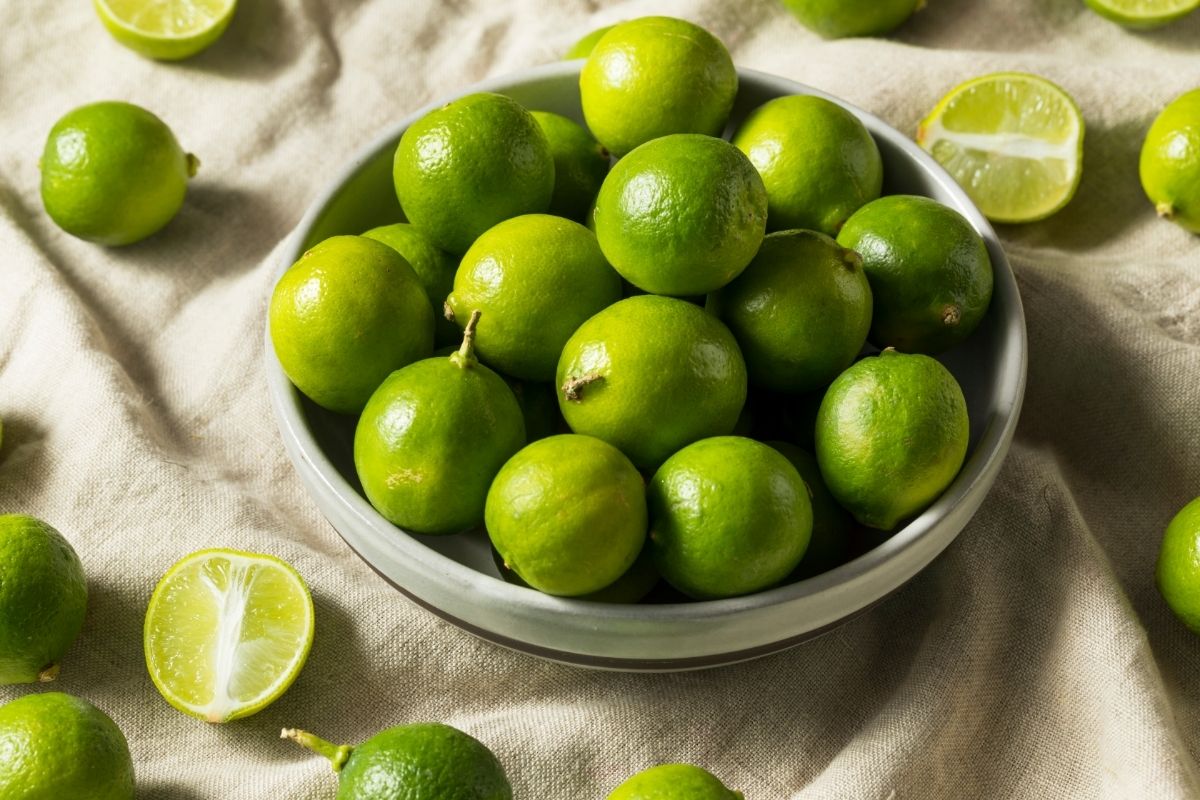
Another well-known and very popular fruit that starts with the letter K is the key lime. Named cleverly after its native home in the Florida Keys, the key lime is a lot rounder than other limes.
The other difference between this lime and others is that it turns a yellow color when fully ripe. Most people think they are also a lot juicier than green limes too.
The most common use for a key lime is unsurprisingly in a key lime pie. The sweet, tarty flavor adds an awesome taste to most desserts but this one is arguably the best.
RELATED: Maranta Lemon Lime: An Easy to Follow Care, Propagation, and Watering Guide
3. Kabosu
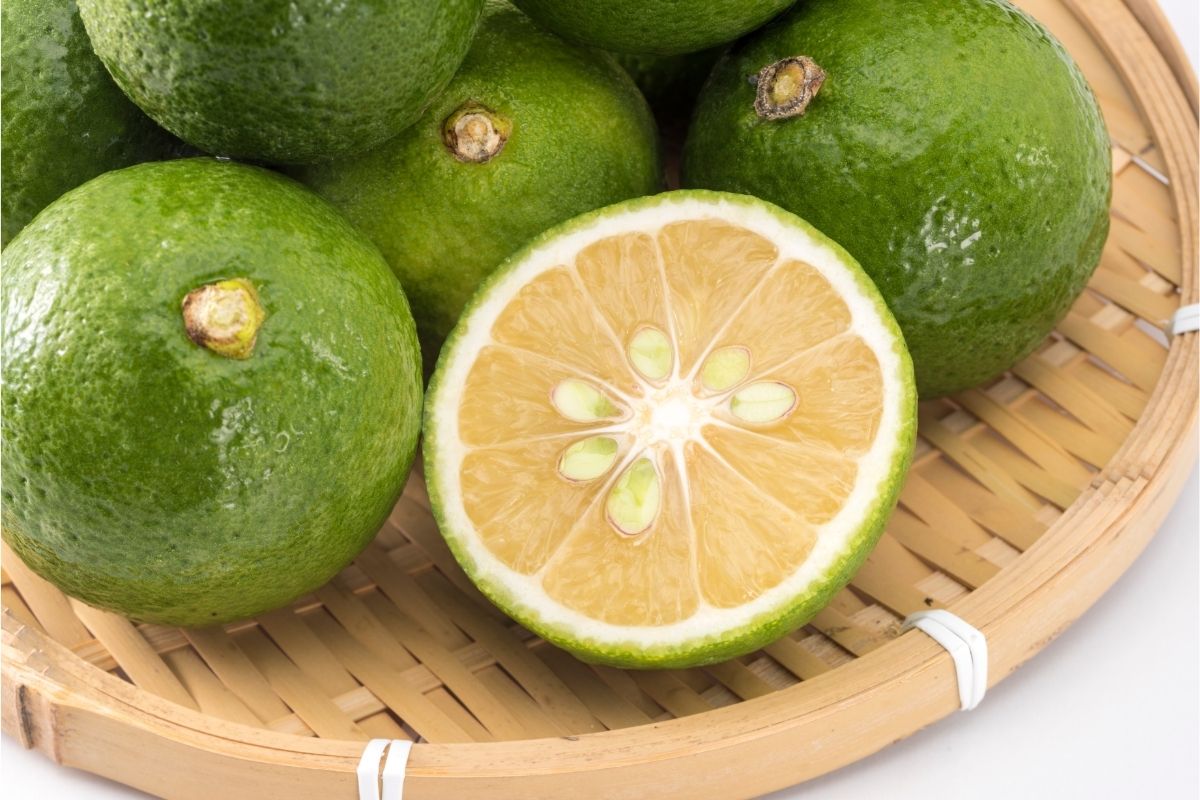
Kabosu is a Japanese citrus fruit that has a similar appearance to lime.
It is a fruit that has a rough and smooth surface that is green when harvested and yellow once ripe.
The pale yellow flesh has a sharp lemon taste. It is this strong lemon taste that sees the fruit commonly used as a vinegar alternative.
4. Korlan Fruit
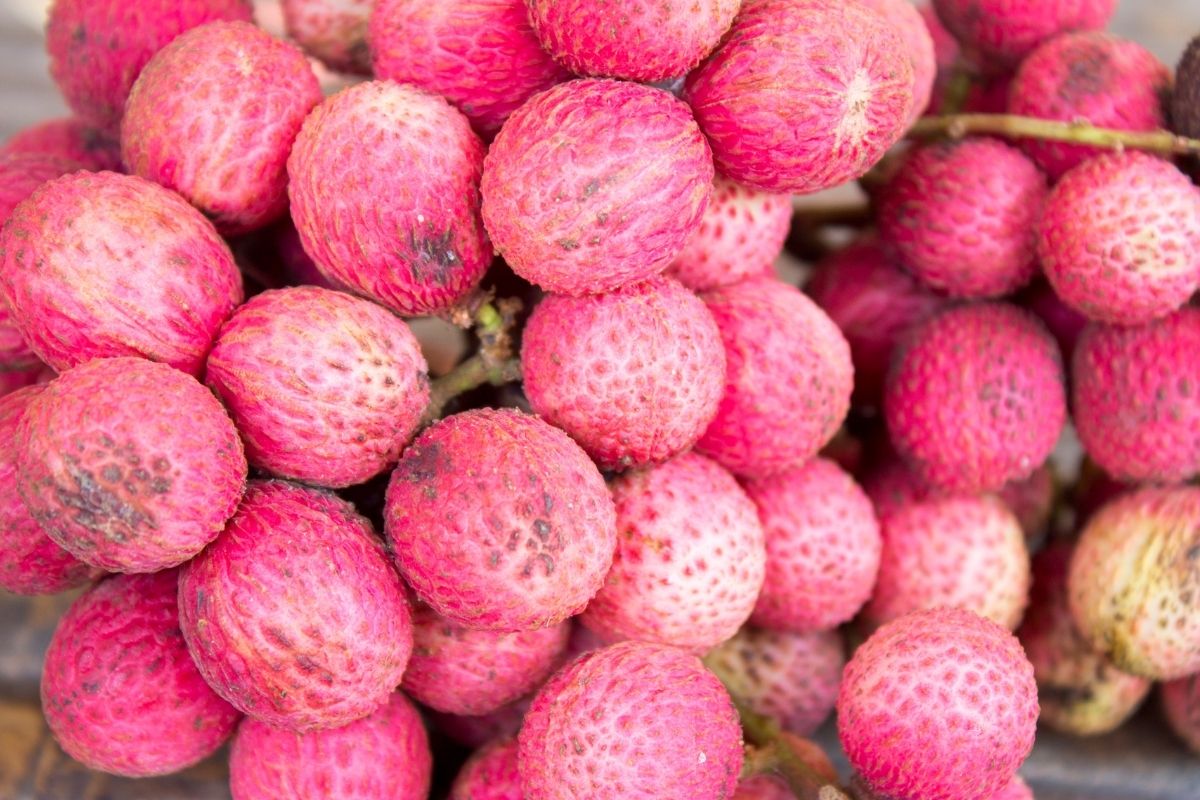
This intriguing fruit can be found all over Southeast Asia. With its bright red, pink color and oval shape, the korlan fruit is quite similar to the lycee.
The bittersweet flesh of the fruit surrounded by its seed offers a refreshing feeling when eaten.
Eaten on its own or with a mix of other fruits the korlan has a number of positive health benefits. These include the repairing of tissue, a reduction in stress levels, and improved blood flow.
5. Koroi
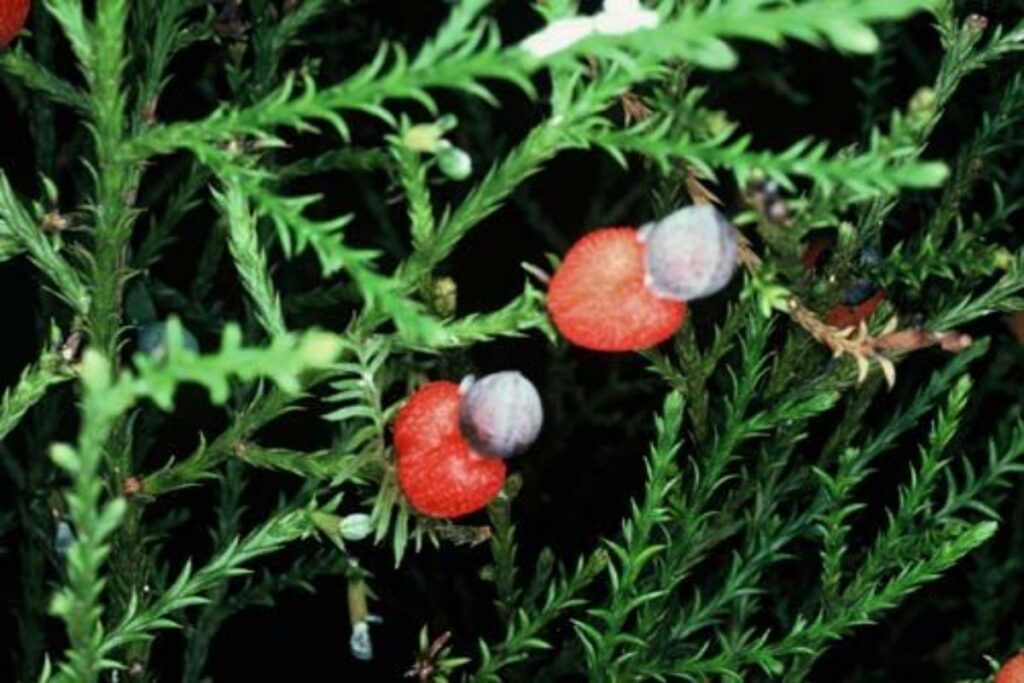
Koroi berries are orange in color with black seeds that grow from the top. The berries are collected from a large coniferous tree found in New Zealand called the Kahikatea tree.
Most people enjoy koroi berries as a simple snack, often eating the sweet-tasting berries by simply popping the seeds and throwing them in their mouths.
6. Kumquat
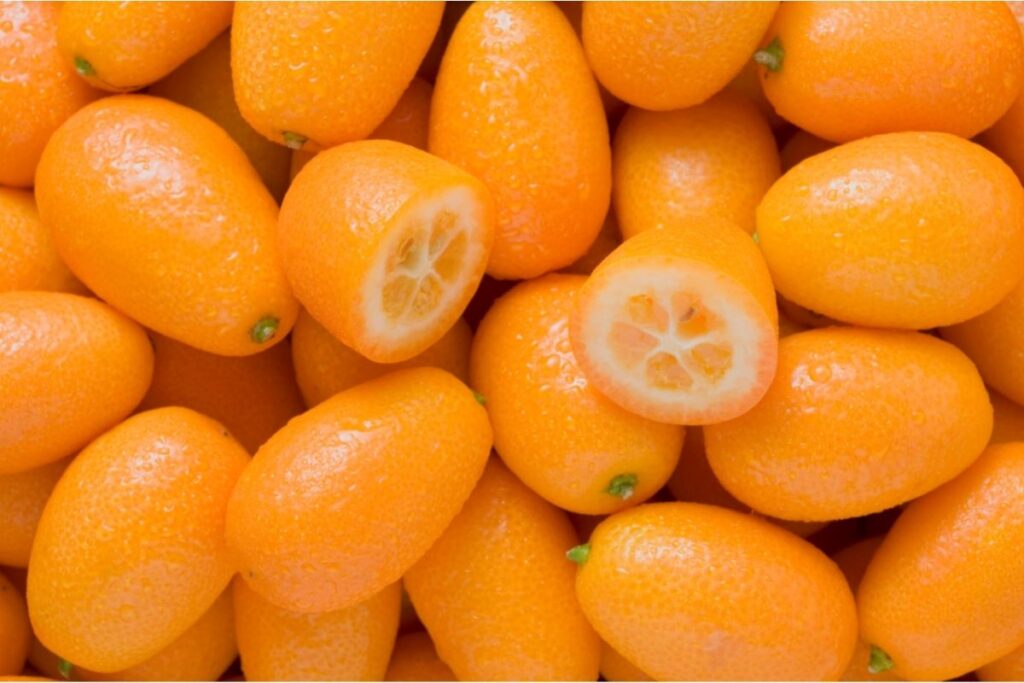
Kumquats are part of the citrus family of fruits. They are pretty well known but not everybody has heard of them.
They have the appearance of much smaller oranges with a softer feel. In fact, the kumquat is no bigger than a grape.
This fruit’s native home is in China but it can also be grown in other hot climates. You can eat the kumquat raw if you like your fruit sour but not overpowering.
Unlike other citrus fruits, you can even eat the peel. Most people decide to use the sweet and sour fruit to produce chutneys, jams, and marmalades.
7. Kei Apple Fruit
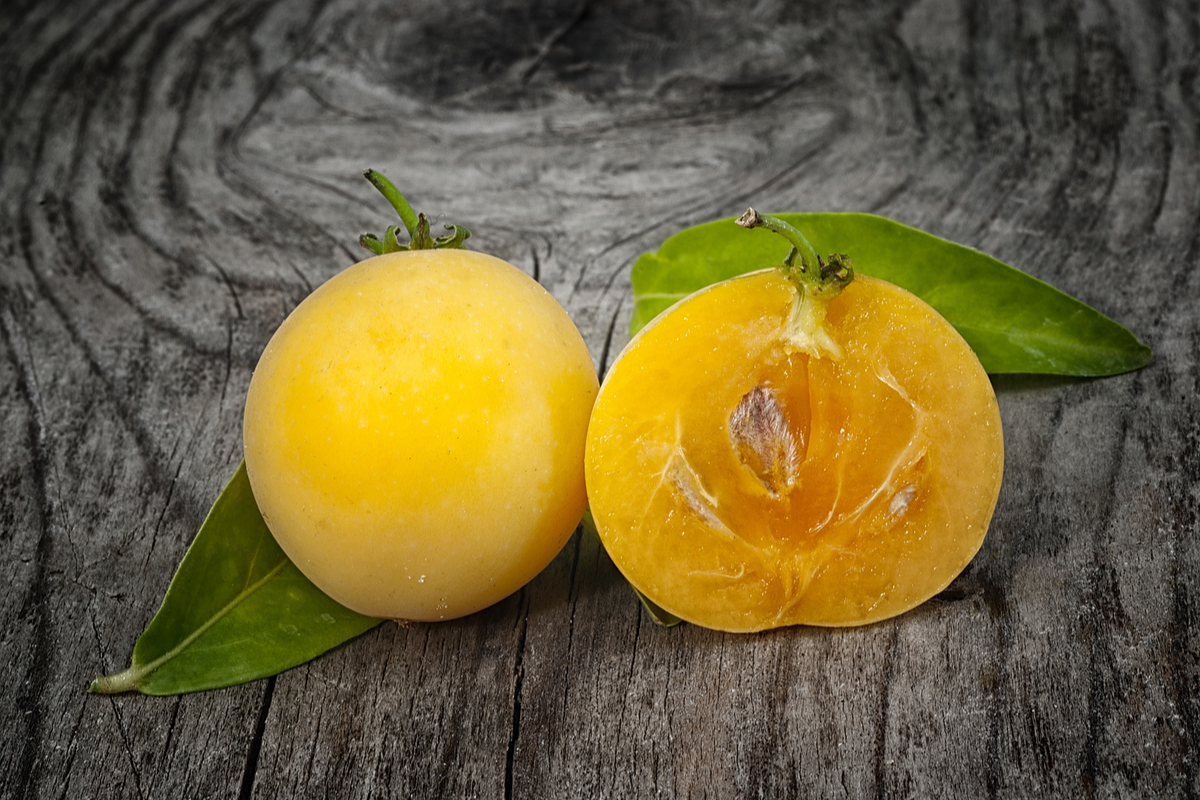
Dubbed the African apricot because of its similar sweet, tangy flavor and soft, yet firm texture, the kei apple fruit is typically used to make tasty jams, smoothies, and cakes.
The sharp taste of the kei apple fruit makes them better suited for cooking. When combined with sweeter flavors the taste is a lot more enjoyable and pleasant.
8. Kaffir Lime Fruit

With a similar appearance to lime but with a more rugged, rough exterior the kaffir lime fruit offers a more intense citrus aroma.
Native to China and Southeast Asia both the fruit and its leaves are used in cooking. When crushed the leaves and the flesh of the fruit add a strong flavor to many dishes.
9. Kahikatea Fruit
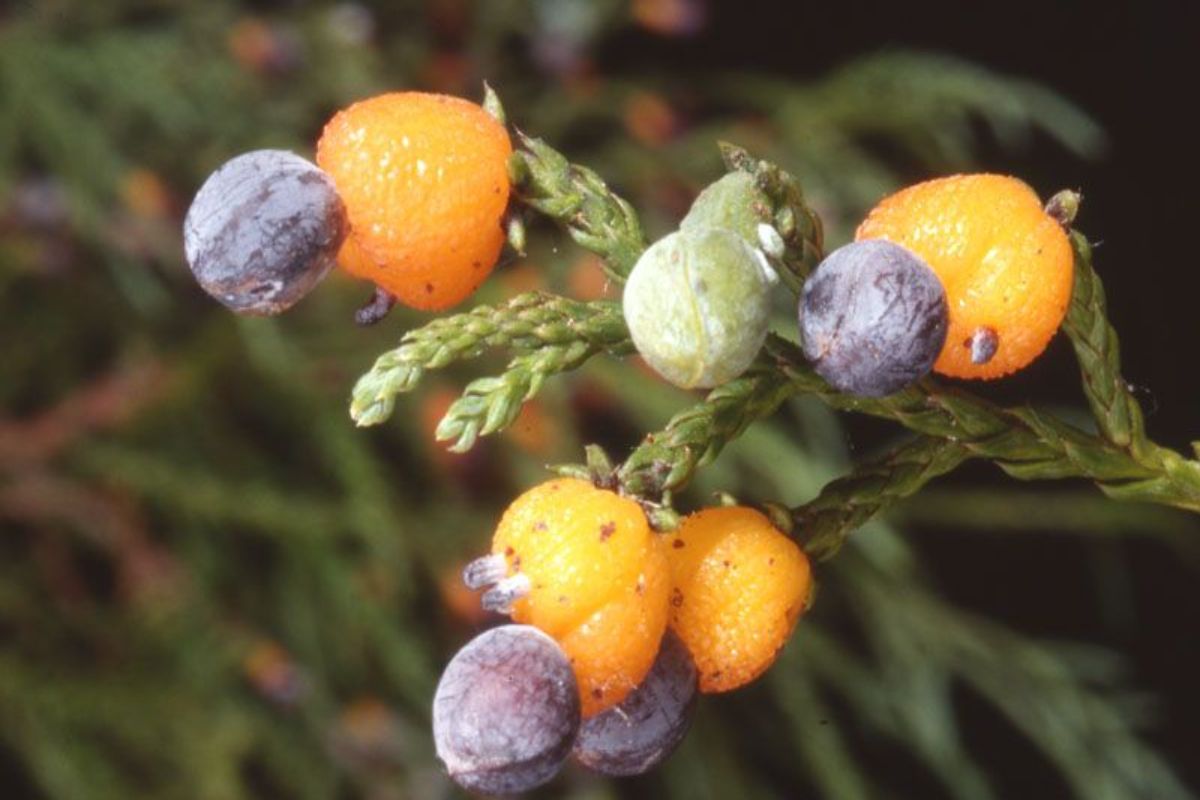
Kahikatea fruit grows on extremely tall trees in New Zealand. It is a fruit that has a jelly-like texture and a lovely sweet and sour taste.
In terms of appearance, the fruit looks a little unpleasant. They look like large berries or grapes but with a rather unsatisfying color.
Despite that, they taste delicious and are known to prevent chronic diseases and improve the digestive system. They were once traditionally harvested by climbers who would scale 50m high trees to obtain the fruit.
10. Kakadu Plum

If you’re after a good source of vitamin C, the Kakadu plum could be the fruit for you. Various studies have shown that this miniature avocado-looking fruit has the highest recorded amount of natural vitamin C in the world.
Native to Australia it was once used as a medicine by native aboriginal tribes. The fruit can be eaten raw but the stewed apple flavor isn’t very inspiring.
RELATED: Sweet As Sugar: 16 Different Types Of Sugar Plum Trees
11. Korean Pear
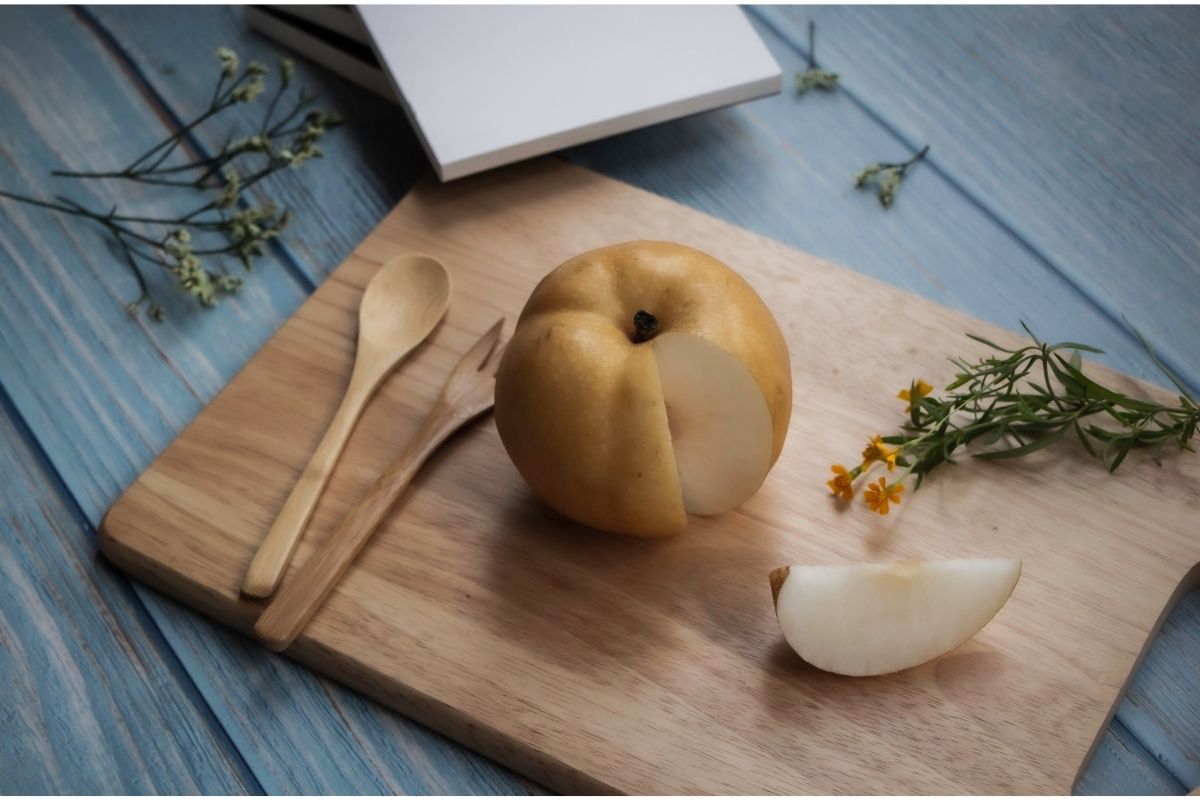
Though this pear is named after Korea where it originated from, the Korean pear is actually hugely popular across the rest of Asia, the U.S., Europe, and Canada.
Surprisingly they don’t look that much like a pear we are typically used to seeing. Instead, they have a more orange, apricot appearance. They also have a sweeter taste than most pears and also a crispier skin.
High in vitamins and minerals, people argue over whether this pear is brown or yellow. Why not have a look and see what you think!
12. Kundang Fruit

In English, the kundang is known as the mango plum or plum mango. It looks eerily similar to mango, just a lot smaller in size so it comes as no surprise that this is a tropical fruit.
Native to Southeast Asia every part of the kundang fruit can be eaten, even the skin, similar to that of a mango. This fruit has a sweet and sour taste that is great raw or when mixed into other fruity dishes or even some curries.
13. Keitt Mango
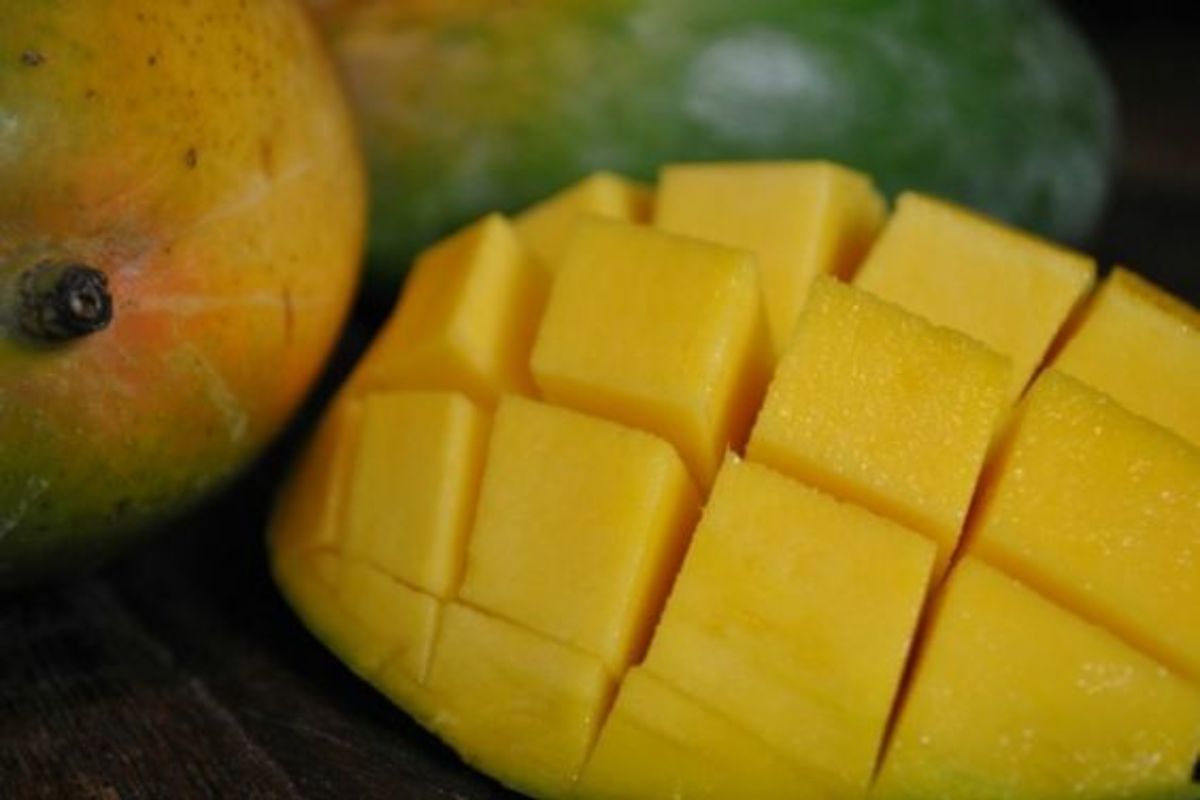
On the theme of mangoes, it would be rude not to include the Keitt mango on this list.
The Keitt mango is one of the largest varieties of mango in the world, native to Florida. They look lovely and taste even better. The bright green fruit can only be found at certain times of the year if you’re lucky.
They are sweet and juicy offering the perfect amount of tropical sweetness and tanginess. As they are green when ripe you may need to give them a squeeze to help you decide if they’re ready to eat or not.
14. Kwai Muk Fruit
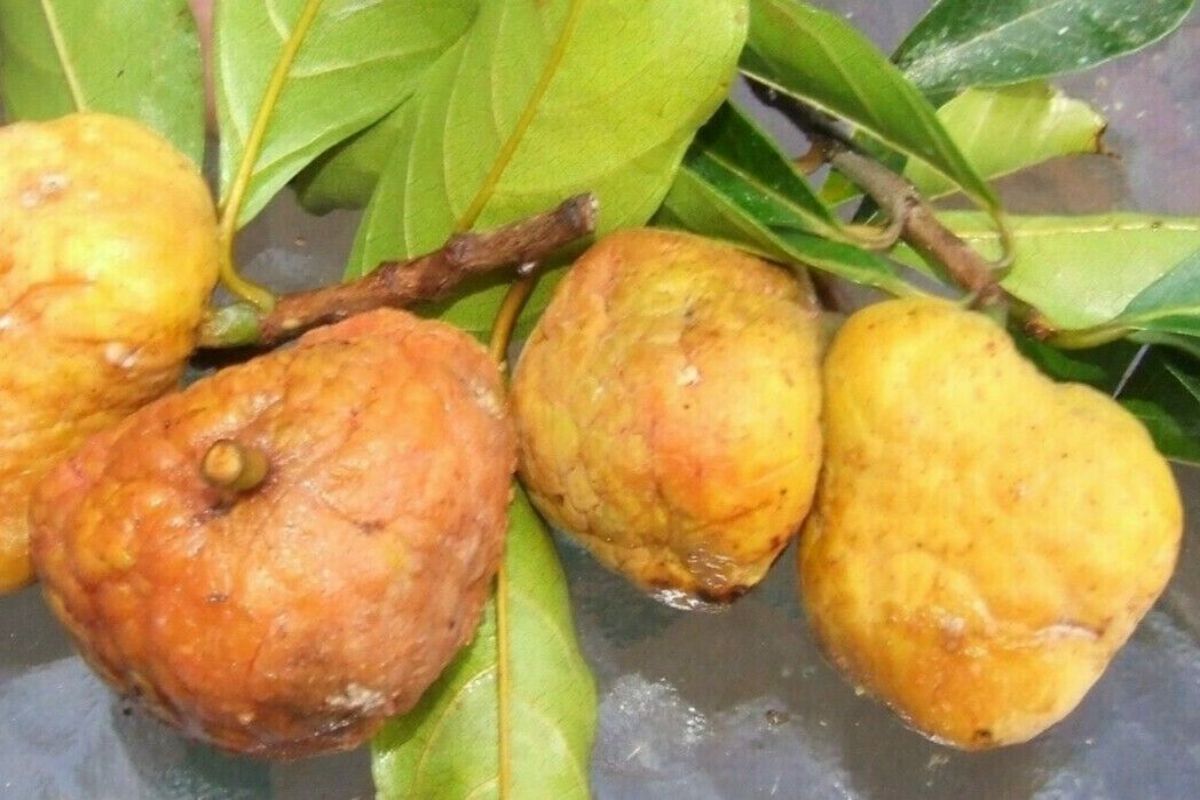
Kwai Muk is a tree native to China that bears a small fruit with a unique flavor. The flavor can only be described as that of an unflavorful strawberry.
As well as having a quite unsatisfying taste the kwai muk fruit also looks pretty disgusting. They have no distinctive shape, have a rough exterior, and in all honesty look like they’re rotting.
15. Kyoho Grapes
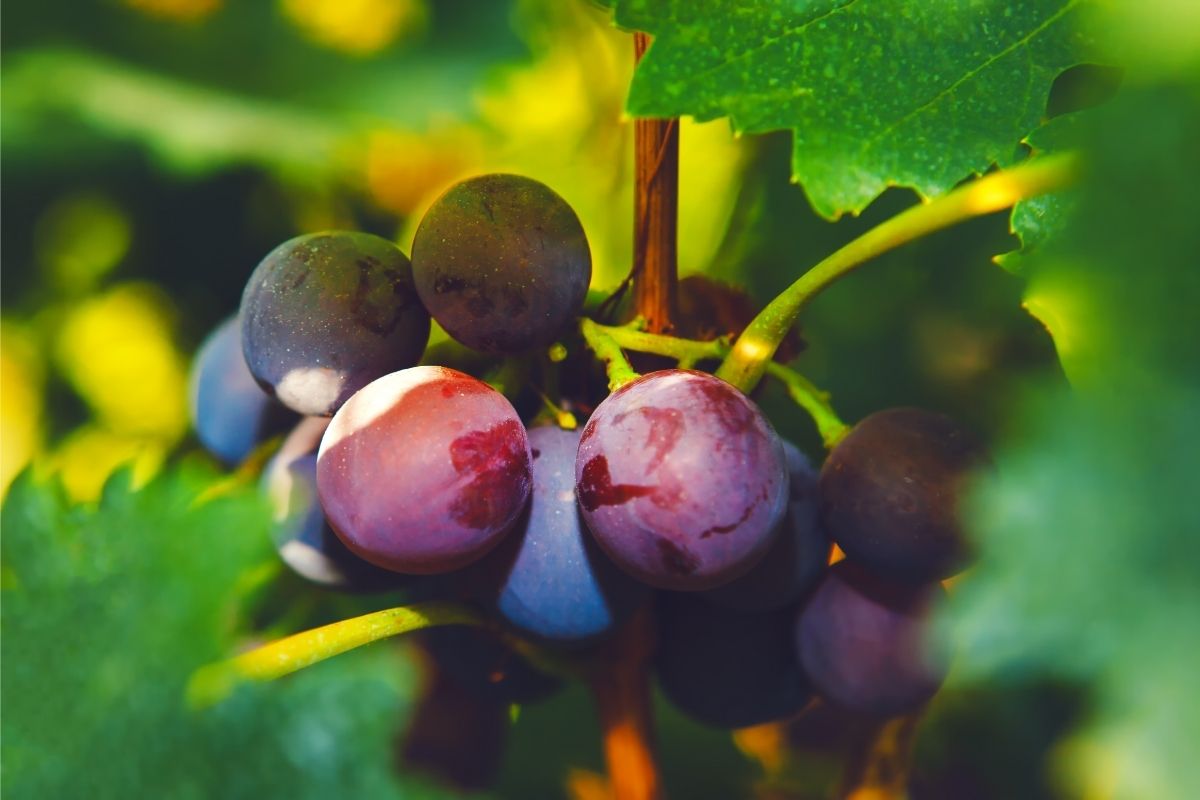
Kyoho grapes were created in Japan. Black in color they tend to be much juicier than other grape varieties, offering a sweet taste that can be enjoyed on its own or in a range of tasty fruit-based dishes.
These grapes are so sweet that they aren’t a great choice if you suffer from diabetes or if you’re on a low-sugar diet.
However, being rich in vitamin C, dietary fiber, and potassium does make them a good fruit for improving heart health.
16. Kanzi Apple
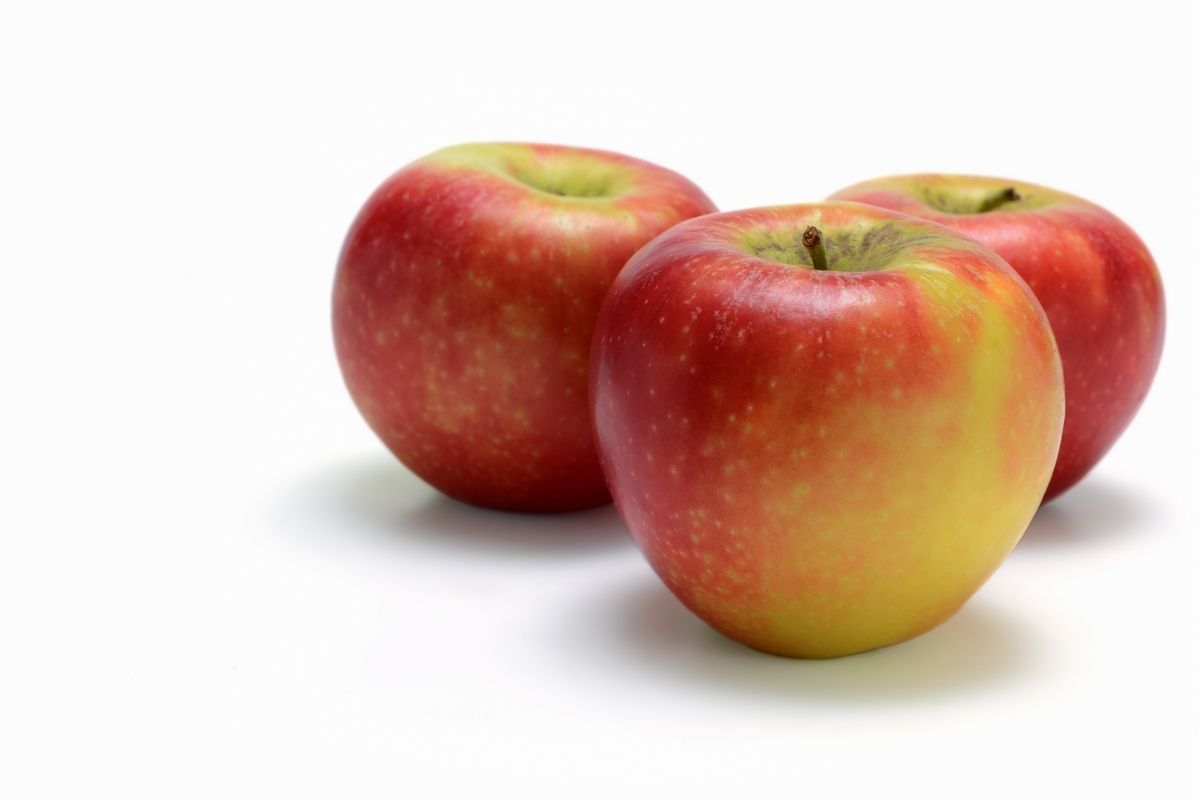
This type of apple may not be the best-known variety of the world-famous fruit, but it is certainly one of the tastiest.
Bright yellow and red in color, they are lovely and juicy. Unlike other apples, they have a more tarty taste rather than sweet and a great crunch. They are easily one of the best types of apple to have as a snack or in a salad.
Unfortunately, they aren’t hugely popular in the U.S so it can be hard to get hold of them, but hopefully, that will change as more and more people enjoy them.
17. Karonda Fruit
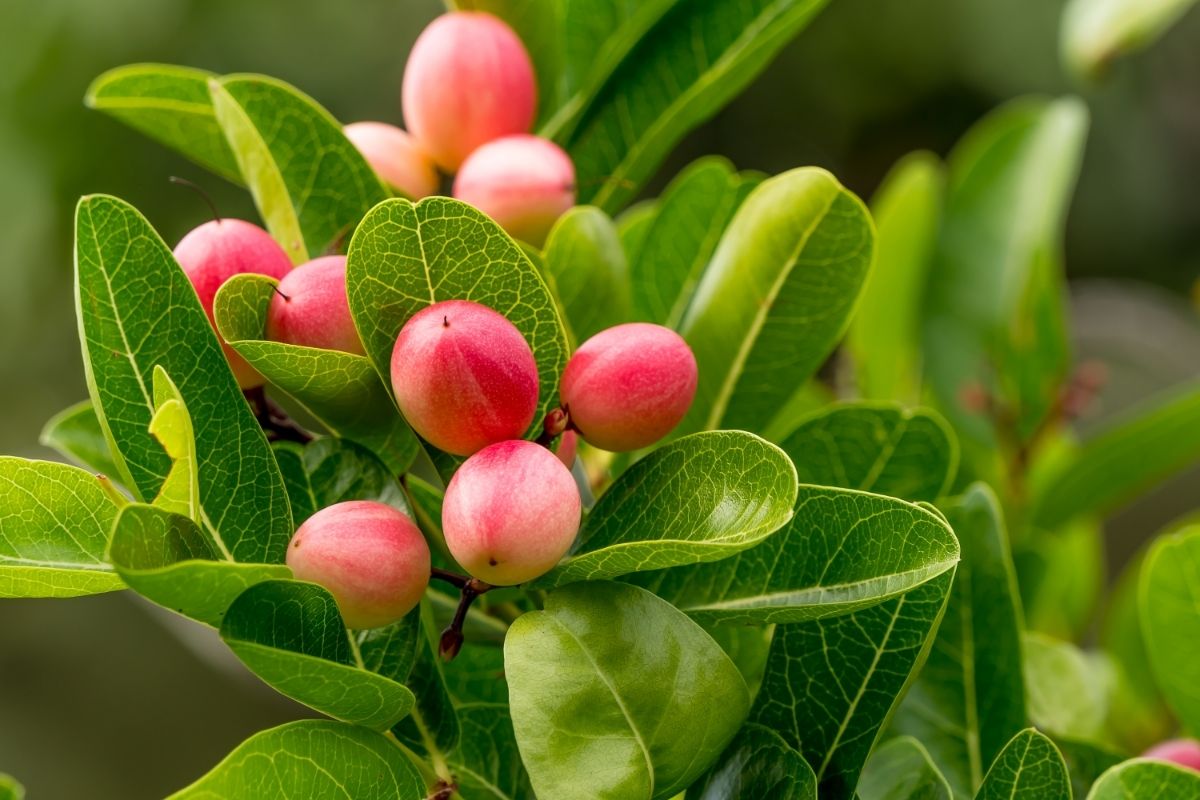
The final fruit on our list is the karonda fruit.
Growing in high temperatures this fruit can be quite sour when first picked but once it has started to ripen the taste becomes a lot sweeter, and a lot more enjoyable.
Small and circular in shape and red in color, the karonda fruit is often used as a cranberry substitute in the making of pickles and chutneys.
Final Thoughts
We bet when you first tried thinking about how many different fruits there are that begin with the letter K you didn’t quite think there were so many.
Fruits that begin with the letter K can vary enormously in taste, shape, color, and size but almost all of them share one thing in common, they all taste awesome.
Whether you’re a big foodie who likes trying new things or a head chef wanting to use new ingredients, now you have this list, why don’t you explore it some more and start trying some of the fruits you haven’t heard of?
The strong flavors and textures will help elevate your dishes to the next level and also give you a great tasty snack.
We hope you learned something from this article, here are other articles that you can learn from:
14 Fruits With Seeds (Including Pictures)
Pumpkins: Growth Time and Stages of Development From Seeds To Fruits







